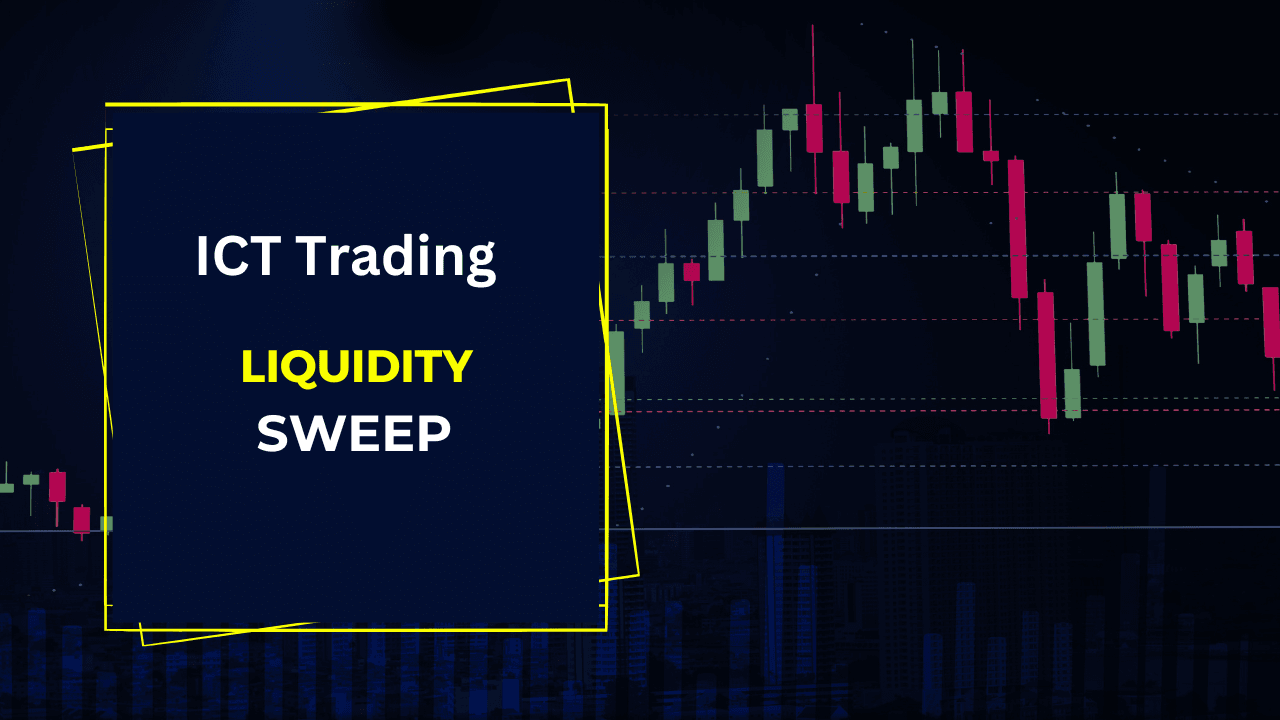In the dynamic world of financial trading, understanding market mechanics is crucial for success. One essential concept that traders must grasp is the liquidity sweep. A liquidity sweep occurs when a large order moves through the market, impacting the price and often leading to significant shifts in market structure. This phenomenon is particularly relevant in Inner Circle Trading (ICT), where liquidity plays a vital role in determining market behavior. By recognizing and utilizing liquidity sweeps, traders can enhance their strategies, identify optimal entry and exit points, and navigate the complexities of the market with greater confidence. This article will delve into the intricacies of liquidity sweeps, their implications in trading, and how to effectively incorporate them into your trading strategies.
Understanding Liquidity in Trading
What is Liquidity?
Liquidity refers to how easily an asset can be converted into cash without significantly affecting its market price. In simpler terms, it measures the ease of buying and selling an asset in the market. Higher liquidity means that an asset can be quickly bought or sold with minimal price fluctuations, while lower liquidity indicates that large trades can cause significant price movements.
Importance of Liquidity in Trading
Liquidity is crucial for several reasons:
- Efficient Pricing: In a liquid market, prices reflect the true value of an asset. When liquidity is high, the bid-ask spread—the difference between buying and selling prices—tends to be narrower. This allows traders to enter and exit positions at better prices.
- Reduced Slippage: Slippage occurs when the execution price of a trade differs from the expected price. In liquid markets, slippage is minimized, making it easier for traders to execute their strategies effectively.
- Market Stability: High liquidity contributes to market stability. It ensures that large orders can be executed without causing drastic price changes, reducing the likelihood of market manipulation.
- Flexibility in Trading: Liquidity allows traders to react swiftly to market changes. Whether it’s entering a trade based on new information or exiting to cut losses, liquidity gives traders the flexibility to make timely decisions.
Types of Liquidity
Understanding the different types of liquidity can further enhance a trader’s strategy:
- Market Liquidity: This type refers to the liquidity of a specific asset in the market. For example, major currency pairs like EUR/USD or popular stocks like Apple tend to have high market liquidity, making them easier to trade.
- Funding Liquidity: This refers to the ability of financial institutions to access funds. A lack of funding liquidity can lead to tighter spreads and increased volatility.
- Accounting Liquidity: This measures a company’s ability to meet short-term obligations. For traders, understanding a company’s accounting liquidity can influence their decisions when trading its stock.
What is a Liquidity Sweep?
Definition of Liquidity Sweep
A liquidity sweep occurs when a large order sweeps through the market, consuming available liquidity at various price levels. This phenomenon usually happens when a trader or institution needs to execute a significant trade quickly, often due to a market event or strategy. As the large order is placed, it may hit multiple levels of liquidity, causing rapid price movements.
For example, if a trader wants to buy a substantial number of shares in a company, their order will start to fill at the best available prices. If there are not enough sellers at those prices, the order will continue to execute at higher prices until the entire order is filled. This action can create noticeable spikes in price, often referred to as “sweeping” through liquidity.
Characteristics of a Liquidity Sweep
Identifying liquidity sweeps involves recognizing specific characteristics:
- Volume and Price Movement: Liquidity sweeps are typically accompanied by high trading volumes and rapid price changes. Traders should look for sudden spikes in volume that correlate with price movements.
- Timeframes and Market Conditions: Liquidity sweeps can occur in various timeframes but are often more evident in lower timeframes like minutes or seconds. It’s crucial to pay attention to market conditions, as news events or announcements can trigger liquidity sweeps.
Importance of Recognizing Liquidity Sweeps in Trading
Understanding liquidity sweeps is essential for traders because they can indicate potential market reversals or continuations. By recognizing these sweeps, traders can better position themselves to take advantage of the resulting price movements. For instance, if a liquidity sweep occurs and pushes the price significantly higher, traders might see this as an opportunity to enter long positions, anticipating further upward movement.
The Role of Liquidity Sweeps in ICT
How Liquidity Sweeps Impact Market Structure
In Inner Circle Trading (ICT), understanding the impact of liquidity sweeps on market structure is crucial for traders. Market structure refers to the organization of price movements and patterns in a trading environment. Liquidity sweeps can significantly alter this structure, leading to new trends or reversals.
- Market Dynamics: When a liquidity sweep occurs, it often breaks through established support or resistance levels. This action can change the perception of market participants regarding future price movements. For instance, if a significant liquidity sweep pushes the price above a resistance level, traders may view this as a bullish signal, prompting them to enter long positions.
- Identification of Swing Points: Liquidity sweeps can help identify swing highs and lows in the market. When a sweep occurs at a previous swing point, it may confirm the strength of that level or indicate a potential shift in market direction. For traders, recognizing these shifts is vital for adjusting their strategies accordingly.
- Trend Confirmation: After a liquidity sweep, the market may either continue in the direction of the sweep or reverse. Traders can use this information to confirm or reassess their market bias. For instance, if a liquidity sweep indicates a strong upward movement, traders may look for additional confirmations before entering a long trade.
The Relationship Between Liquidity Sweeps and Order Flow
In ICT, the concept of order flow is essential for understanding liquidity sweeps. Order flow refers to the buying and selling activity in the market, which directly influences price movements.
- Analyzing Order Flow: By studying order flow, traders can gain insights into where liquidity is concentrated. A liquidity sweep suggests that large orders are being executed, which can indicate the intentions of institutional traders. Understanding these intentions allows retail traders to align their strategies with the prevailing market direction.
- Detecting Market Sentiment: Liquidity sweeps can also reveal market sentiment. If there is a significant liquidity sweep in one direction, it can signal bullish or bearish sentiment among traders. This information is invaluable for retail traders looking to gauge market momentum and make informed decisions.
How to Use Liquidity Sweep in Trading
Developing a Trading Strategy with Liquidity Sweeps
Incorporating liquidity sweeps into your trading strategy can enhance your decision-making process. Here are some effective ways to utilize liquidity sweeps:
Entry Points
- Identifying Opportunities: After a liquidity sweep occurs, traders should look for potential entry points. For instance, if a sweep breaks a resistance level, traders may consider entering long positions as the price may continue to rise.
- Wait for Confirmation: It’s crucial to wait for confirmation signals, such as a retest of the broken level, to increase the probability of a successful trade.
Exit Points
- Setting Take-Profit Levels: Traders can set take-profit levels based on the price action following a liquidity sweep. If the price continues to move in their favor, traders should consider trailing their stop-loss to lock in profits.
- Using Stop-Loss Orders: Setting stop-loss orders just below significant levels can help manage risk. If the market reverses after a liquidity sweep, this can protect traders from larger losses.
Risk Management Techniques
Effective risk management is essential when trading based on liquidity sweeps:
- Managing Exposure: Traders should assess their risk tolerance and determine how much capital they are willing to risk on a trade. A common rule is to risk no more than 1-2% of your trading account on a single trade.
- Position Sizing: Calculate your position size based on your risk management plan. This ensures that you do not overexpose yourself to potential losses during periods of volatility triggered by liquidity sweeps.
- Monitoring Market Conditions: Stay aware of overall market conditions and news events that may impact liquidity. Understanding these factors can help traders anticipate potential liquidity sweeps and adjust their strategies accordingly.
By integrating these strategies and risk management techniques, traders can effectively utilize liquidity sweeps to enhance their trading performance. Recognizing and acting on liquidity sweeps can provide valuable insights into market movements and improve overall trading results.
Real-Life Examples of Liquidity Sweeps
Stock Market Liquidity Sweep
Consider a scenario in the stock market where a major company releases its quarterly earnings report, and the results exceed analysts’ expectations. This positive news can trigger a liquidity sweep as institutional investors rush to buy shares.
- Price Movement: As these large buy orders flood the market, the stock price begins to rise rapidly, breaking through key resistance levels. For example, if a stock was previously trading at $50 and experiences a liquidity sweep, it could quickly jump to $55 or higher within a short time frame.
- Trade Implications: Traders who recognize the liquidity sweep can enter long positions, anticipating that the momentum will continue. In this case, they could set their take-profit levels just below the next resistance zone, ensuring they capitalize on the upward movement while managing their risk.
Forex Market Liquidity Sweep
In the Forex market, liquidity sweeps can be observed during major economic announcements, such as non-farm payroll data in the United States. Traders expect high volatility around such events, leading to increased liquidity as participants position themselves ahead of the release.
- Market Reaction: When the actual data is released, a liquidity sweep may occur if the results are significantly better or worse than expected. For instance, if the unemployment rate drops unexpectedly, the USD may strengthen against other currencies. This could lead to large buy orders for the USD, causing a swift increase in its value against the EUR or GBP.
- Opportunity for Traders: Forex traders who understand liquidity sweeps can prepare for potential price spikes by placing orders around the time of the announcement. However, it’s crucial to use risk management techniques, such as placing stop-loss orders to protect against adverse movements.
Common Mistakes to Avoid
Ignoring Market Context
One of the most significant mistakes traders make is ignoring the broader market context when identifying liquidity sweeps.
- Neglecting News Events: Failing to consider upcoming economic announcements or geopolitical events can lead to misunderstandings about the reasons behind a liquidity sweep. For instance, if a liquidity sweep occurs without considering a recent interest rate change announcement, traders might misinterpret the price movement.
Overreacting to Liquidity Sweeps
Another common error is overreacting to liquidity sweeps without waiting for confirmation.
- Chasing the Market: Many traders jump into trades immediately following a liquidity sweep, believing that the momentum will continue indefinitely. However, this can lead to poor decisions, especially if the market reverses shortly after. Instead, traders should wait for confirmation signals, such as a retest of a breakout level or additional bullish candlestick patterns.
Poor Risk Management
Effective risk management is crucial when trading based on liquidity sweeps. Failing to implement proper risk management techniques can lead to substantial losses.
- Neglecting Stop-Loss Orders: Many traders fail to set appropriate stop-loss orders, believing they can “feel” the market’s direction. This approach can be detrimental, especially in volatile conditions triggered by liquidity sweeps. It’s essential to define your risk tolerance and set stop-loss levels that reflect that risk.
Lack of a Trading Plan
Finally, trading without a clear plan can lead to confusion and poor decision-making.
- Ad hoc Trading Decisions: Traders who react to liquidity sweeps without a predefined strategy often find themselves in positions that don’t align with their overall trading goals. It’s vital to establish a comprehensive trading plan that includes entry and exit criteria, risk management guidelines, and specific criteria for identifying liquidity sweeps.
By learning from these real-life examples of liquidity sweeps and avoiding common mistakes, traders can better position themselves to capitalize on market movements. Understanding the implications of liquidity sweeps within the context of ICT can enhance trading strategies and improve overall performance.
Conclusion
In summary, liquidity sweeps play a crucial role in the world of trading, particularly within the framework of Inner Circle Trading (ICT). By understanding how liquidity sweeps function, traders can gain valuable insights into market dynamics and structure. This knowledge empowers them to make informed decisions, enhancing their ability to identify potential trading opportunities.
As demonstrated through real-life examples, liquidity sweeps can trigger significant price movements in both the stock and forex markets. Recognizing these sweeps and understanding their implications can lead to better entry and exit points, ultimately improving trading performance. However, it is equally important to be aware of common mistakes, such as neglecting market context, overreacting to market movements, and failing to implement proper risk management strategies.
To harness the power of liquidity sweeps effectively, traders should develop a structured trading plan that includes clear criteria for entry, exit, and risk management. By doing so, they can align their trading strategies with market realities and avoid the pitfalls that many traders encounter.
In conclusion, integrating liquidity sweeps into your trading strategy can be a game-changer. By being diligent, informed, and strategic, traders can navigate the complexities of the market with greater confidence and success. Understanding the nuances of liquidity sweeps within ICT can enhance your trading journey, leading to more consistent and profitable outcomes.
Read More Jerry Sanders- AMD Visionary Founder
Frequently Asked Questions
What is a liquidity sweep in trading?
A liquidity sweep occurs when large buy or sell orders in the market quickly consume available liquidity, leading to significant price movements. This often happens at key support or resistance levels, resulting in a rapid shift in market dynamics.
How do liquidity sweeps affect price action?
Liquidity sweeps can cause sudden and dramatic changes in price action. When a sweep occurs, it may break through established levels, leading to new trends or reversals. Traders can use these movements to identify potential entry and exit points.
What role do liquidity sweeps play in Inner Circle Trading (ICT)?
In ICT, liquidity sweeps are essential for understanding market structure and order flow. Traders analyze liquidity sweeps to gauge the intentions of larger market participants, helping them align their strategies with prevailing market sentiment.
How can I identify liquidity sweeps in the market?
Traders can identify liquidity sweeps by monitoring price movements around key levels, using technical analysis tools such as support and resistance zones, and observing order flow patterns. Significant price spikes accompanied by high trading volume often indicate a liquidity sweep.
How can I use liquidity sweeps to improve my trading strategy?
To effectively use liquidity sweeps in your trading strategy, develop clear criteria for entry and exit points based on identified sweeps. Incorporate risk management techniques and continuously monitor market conditions to adapt your strategy as needed.


